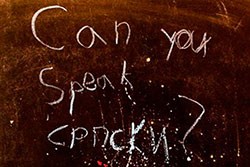
Coffee is a part of Italian culture, tradition, its lifestyle. It is consumed all over the country in huge amounts, at homes and in an infinite number of cafés that seem to be at every corner of every street. Nevertheless, there are some interesting facts and stories you should familiarize yourself with before ordering your next Italian coffee.
The Italian coffee drinking culture is deeply rooted in espresso. It is a mixture of different types of coffee that are exposed to hot water in the espresso machine for a short period of time in order to dissolve only the desired substances into the cup.
Espresso coffee is a blend made of different types of coffee of different quality which are mixed according to the type of use and taste preferences. These mixtures normally contain both Arabica and Robusta coffee inasmuch as Arabica is an aromatic, delicate coffee with the right acidity whereas Robusta is responsible for the fullness of its aroma and creaminess.
Types of coffee based on espresso:
Caffė ristretto (Short coffee)- It is a type of espresso where less water is let through the espresso machine, and in doing so results in a stronger taste with less concentration of caffeine.
Caffė lungo (Long coffee)-as opposed to the ristretto, it is obtained by allowing more water into the cup. It has a less concentrated taste with a higher concentration of caffeine.
Caffė- if you simply order a coffee in Italy you are bound to get an espresso, which is neither short like ristretto nor long like caffe lungo. This is the standard coffee consumed by most coffee lovers all over Italy.
Caffė macchiato- it is a normal espresso coffee to which milk is added. Machia in Italian means a stain, and the coffee is duly named stained, because the milk gives a white color that looks ‘stained’ by the coffee.
Cappuccino- it is a mixture of milk and espresso where larger quantities are used in comparison to ‘macchiato’ and it is served in larger cups than any other variety mentioned before.
Coffee in Italy is of superb quality in almost all bars. In the north they tend to prefer the coffee which is more delicate and thus with higher percentage of Arabica, while in the south the stronger one, therefore with a higher percentage of Robusta. The quality of the coffee is so high that usually people who get used to the Italian standards give up on espresso when they get back to their own country. This is why in some countries coffees with a lot of different types of milk, candies and other ingredients are very popular, since the poor quality of the coffee is easily camouflaged by adding these ingredients.
Coffee prices
It is very interesting to analyze the liquidity of the local economy over the price of a cup of coffee. Even though an espresso is standardized and its price tends to level off at around 1 Euro, in different regions of Italy even the price of an espresso varies significantly. For example, in Sicily the price of an espresso starts at 0.60 euros, in most of Italy it is 1 euro, in the Italian highway stops it is around 1.3 euros while at Piazza San Marco in Venice it can go up to 7-8 Euros. The highest prices are always at the tourist destinations that are well-frequented by foreigners. Here, a local coffee shop owner tends to overcharge for their service, since most visitors think that ‘a coffee is a coffee’ wherever you drink it. Therefore, in close proximity of the most well-known tourist attractions everything, including coffee, cost much more than just 50 meters down the road i.e. away from that specific tourist attraction. If you put some thought to it, it is arguably a perfect business model, since tourist continue coming in groves and there is no fear that they will ever get back to the same coffee shop and that they will ever see them again, nor that they can bad mouth a particular bar, coffee shop etc so that it gets bad press . That is why the café owners do not seem to be fussed about the quality of their coffees served This is why no Italian will ever set their foot in a coffee shop next to a tourist amenity viewed as a tourist trap by the locals. Lest we forget, Italians mostly drink their coffee standing, while exhausted tourist tend to slouch and enjoy their coffee while enjoying their well deserved rest. This is why a cup of coffee costs 1 Euro if you are having it at the bar, whilst if you sit it can cost much more.
Interesting facts
